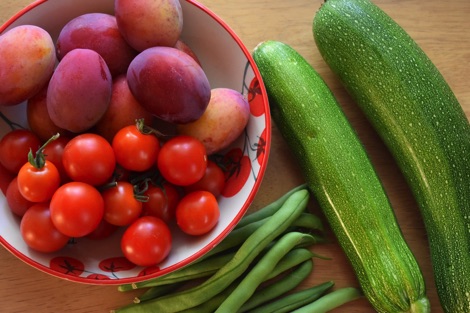
Seasonal food
Seasonal, locally produced food can help reduce your carbon footprint. We suggest ways to make the most of early autumn harvests
The UK has experienced some record-breaking warm and dry weather for the past few months.
The country had its warmest spring on record; and spring 2025 was also the driest in more than 50 years. We've also had the hottest June since records began in 1884, as well as several heatwaves.
In the UK, a heatwave is defined by the Met Office as “a period of at least three consecutive days with daily maximum temperatures meeting or exceeding the heatwave temperature threshold.” This threshold ranges from 25°C to 28°C, depending on which part of the country you live in.
Climate change is making extreme weather events like heatwaves more likely and more frequent. And this is having an inevitable impact on food production in the UK and across the world.
In 2025 some UK crops, such as wheat, barley and broccoli, have suffered badly. Other harvests have fared better – the plum harvest, for example, has been the best for several years.
Choosing seasonal, locally grown food is one way you can help to reduce your carbon footprint and your impact on climate change – and shopping this way has other benefits too.
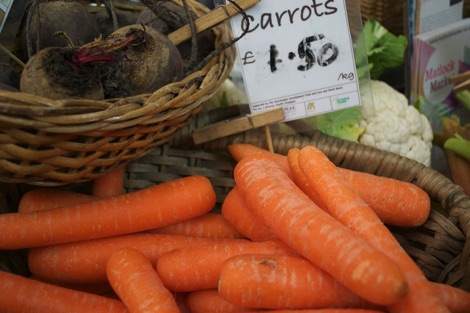
Local, seasonal produce is usually cheaper than fruit and veg that's come from far-flung places, so can shave pounds off your shopping bill. Local food is fresher too – as it's had less far to travel, it can be delivered and sold soon after being picked. And seasonal fruits and vegetables often have much more flavour than their out-of-season counterparts.
Farmers' markets are a great place to check out locally produced fruit and vegetables. Or you could sign up for a weekly veg box to make sure you get your 5-a-day – you may be able to find a veg box service that offers food grown locally to you. Buying at a Farmers' market or through a veg box scheme can reduce packaging, as produce is often packed loose or in paper bags, rather than being wrapped in plastic.
If you do buy fruit and veg in supermarkets, check the label to be sure you're buying British produce. Choosing British food means you are supporting the country's farmers and the local economy.
For lots of inspiration for how to cook and store seasonal produce, see the Love Food Hate Waste website. You can search the site for individual ingredients to find recipes and ways to freeze or preserve fruit and veg – helping you to avoid food waste.
For starters, though, here are a few ideas for using tomatoes, courgettes, French beans and plums, which are all in season right now.
Tomatoes
Raw sliced tomatoes are an essential ingredient in many salads – and, if you grow your own, nothing tastes better than a sun-warmed tomato eaten straight from the vine.
Cooked tomatoes are especially good for you. Try roasted tomatoes: toss in olive oil and cook for about 15 minutes. If you add some fresh basil, sliced garlic and cubes of feta to the roasting pan, you'll have a delicious topping for pasta.
Cherry tomatoes are an excellent addition to a homemade quiche: cut the tomatoes in half and arrange in a cooked pastry case, cover with 100g of grated cheddar, pour over 150ml whole milk whisked with 2 eggs and bake for 30-40 minutes at 180C.
For a quick lunch or supper dish, combine chopped tomatoes with olive oil, vinegar and fresh basil and use as a topping for toasted sourdough bread.
For lots more tomato recipes see www.britishtomatoes.co.uk.
Courgettes
Courgettes make a tasty side dish when cooked simply – fry or roast in olive oil, with a sprinkling of dried mixed herbs. Roasted courgettes are a versatile addition to many meals: use to top a pizza, add to pasta, or put in a filo pastry pie with some feta cheese.
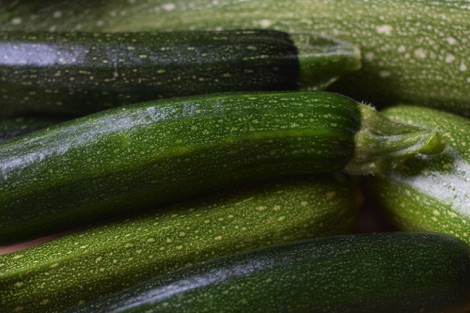
Courgettes are the base for two popular Mediterranean dishes: ratatouille and briam. Ratatouille originates in the south of France, and is a stove-top stew consisting of courgettes, aubergines, onions, garlic and tomatoes. Greek briam uses similar ingredients, often with the addition of finely sliced potatoes, but in this dish the vegetables are layered in a pot and slow-roasted in the oven (briam also works well in a slow cooker).
For a speedy supper, mix a tablespoon of plain flour with a tablespoon of grated parmesan and a twist of black pepper. Slice courgettes lengthwise and coat in the floury mixture, then fry in hot olive oil for a few minutes on each side until crispy. Serve with tzatziki and pitta bread.
If you have a glut of courgettes, roast or grill sliced courgettes and then freeze them – or make spicy courgette chutney.
French beans
French beans can be used to make a simple salad. Cut beans into bite-sized pieces and blanch in boiling water for about five minutes. Drain, cool and toss in a dressing made from one tablespoon of olive oil, one tablespoon of lemon juice, and a teaspoon of garlic paste.
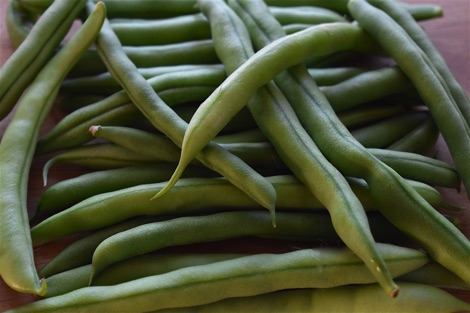
Or stir black olive tapenade through cold, blanched beans, then top with anchovies and sliced hard-boiled egg for a Niçoise-style salad.
French beans are also ideal for stir-fries – use sesame oil and add finely chopped garlic, root ginger and chilli for a spicy side dish. Or for an easy Thai-style curry, fry an onion in olive oil, add Thai green curry paste, French beans, strips of red pepper and carrot, and baby corn. Add a tin of coconut milk and simmer for about 20 minutes until the vegetables are tender. Serve with jasmine rice.
Plums
There are many different varieties of British plum available, from yellow and red Victoria to dark purple damson to pale yellow mirabelle.
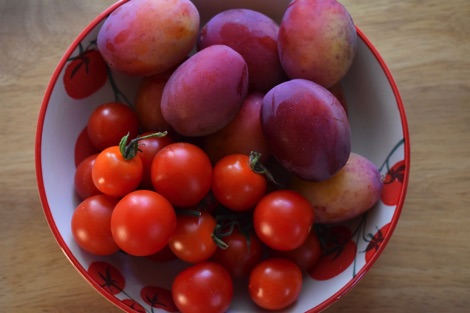
Raw plums are delicious. They can also be roasted, poached or stewed and added to crumbles, cakes and pies. For a quick and easy dessert, spread halved, stoned plums on a baking sheet and sprinkle with orange juice and 100g grated marzipan, then bake at 180°C for 15 minutes. Pile into a ready-made sponge flan case, sprinkle with toasted, flaked almonds and serve with double cream.
If you have a glut, plums can be halved, stoned and frozen for later use in crumbles, pies and puddings. Or make jam. Plum jam is one of the easiest jams to make as these fruits are naturally high in pectin, the substance that causes jams and jellies to set. Put a kilo of stoned and halved plums into a large pan with 250ml water and simmer for 20 minutes until soft. Add 1kg sugar and a tablespoon of lemon juice and boil rapidly for 10-15 minutes until setting point is reached. Allow to cool for 10 minutes before pouring into sterilized jars.
Little Green Space August 2025
Ads/Affiliate links
Little Green Space is a non-profit project sharing solutions to the nature and climate crises, and offering inspiration for a greener lifestyle. If you like our content, please help keep us going with a small donation!

